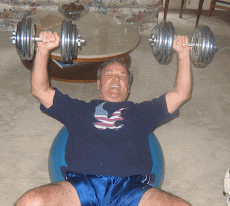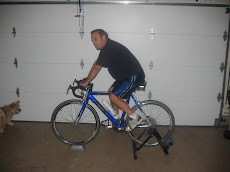Proper nutrition and diet is a critical factor in losing weight and becoming really healthy and fit. You can do everything else right, including an intensive exercise program, but if you regularly eat unhealthy junk foods, you will never really become healthy and fit.
People get fat primarily because of the food they eat…both the type and amount. They often eat the wrong types of food…too much sugar, fat, and carbohydrates, and they eat too much for the often sedentary lifestyles they lead.
So the secret of losing weight and staying slim is not some magic temporary diet, but rather in permanently changing your diet and eating habits. Eat the right kind of foods, in the right amounts, and get some good regular exercise, and your weight will start returning to normal levels…and this can happen rather quickly.
An extreme example of this was recently seen on the nationwide T.V. show “The Biggest Losers”, where people lost 40% to 50+% of their total bodyweight right before our eyes in just weeks. The contrast shown in before and after photos, was absolutely amazing. And while the contestants had professional trainers, financial incentives, and a controlled environment, it clearly shows what can be accomplished with a proper diet and exercise, click on NBC link below:
http://www.nbc.com/The_Biggest_Loser/contestants/wherearetheynow/kellymin.shtml
So, if obese 300 and 400 pound people like those on the Biggest Losers TV show can lose that amount of weight and get fit in just weeks, anyone can do it with proper diet and regular exercise.
It may take you a little longer, as you probably don’t have the time or motivation to exercise several hours per day or stick to an Spartan like diet, but with proper diet, and just 20-30 minutes of exercise per day, you can achieve amazing results in just weeks’.
Also by committing to eating better, you can reduce your risk of many chronic diseases – including heart disease, diabetes, osteoporosis and certain cancers – while increasing your energy and stamina. Healthy eating can even lower “bad” LDL cholesterol as much as low-dose statin drugs!
A healthy diet helps improves your overall health and well being, helps you feel better, provides you with more energy, helps you stay fit, and helps you fight stress.
Healthy eating can also prevent most cases of heart disease and diabetes and help ward off high blood pressure, osteoporosis, and some forms of cancer.
Healthy eating begins with learning how to “eat smart”. -- It's not just what you eat, but how you eat. Some eating tips:
- Thoroughly chew your food: Your digestion begins in your mouth. Chewing breaks the food into smaller particles and mixes the food with saliva that contains digestive enzymes. Thorough digestion is also the key to the absorption of nutrients and to good health! Chew your food slowly, savoring every bite. Reconnect with the joy of eating.
- Don’t eat when stressed out. When you are stressed, your digestion can be severely compromised. So avoid eating while working, driving, or watching TV. And avoid confrontations, serious discussions or worry during meals. If you feel stressed or upset, stop eating and relax before continuing with your meal. Playing soothing music and lighting a few candles is a great way to create a relaxing atmosphere.
- Learn to listen to your body: Eat slowly and stop eating when you feel full. It actually takes a few minutes for your brain to tell your body that it has had enough food, so eating slowly can help you get a more accurate read on this, as well. Eating just enough to satisfy your hunger will help you remain alert, relaxed and feeling your best.
- Eat early and eat often: Do you remember the saying: breakfast like a king, lunch like a prince, dinner like a pauper. Starting your day with a healthy breakfast can jumpstart your metabolism. Also, eating five or six small, healthy meals throughout the day, rather than the standard three large meals, can help keep your metabolism going and ward off late night snack attacks.
For overall healthy eating I recommend you put a heavy emphasis on fresh fruits and vegetables, and fish, poultry and beans for protein (though I also find an occasional lean steak or chop delicious).
I’d also suggest you try eating a small fresh salad before every meal to increase your fresh vegetable intake, and help moderate your appetite so you can cut down on the volume of grains and carbohydrates you eat at meal time.
And after a while, I think you’ll find that good healthy foods can be every bit as enjoyable as junk foods and fat or sugar laden foods, especially when you know what you’re eating is actually helping you improve your health and achieve your fitness goals.





